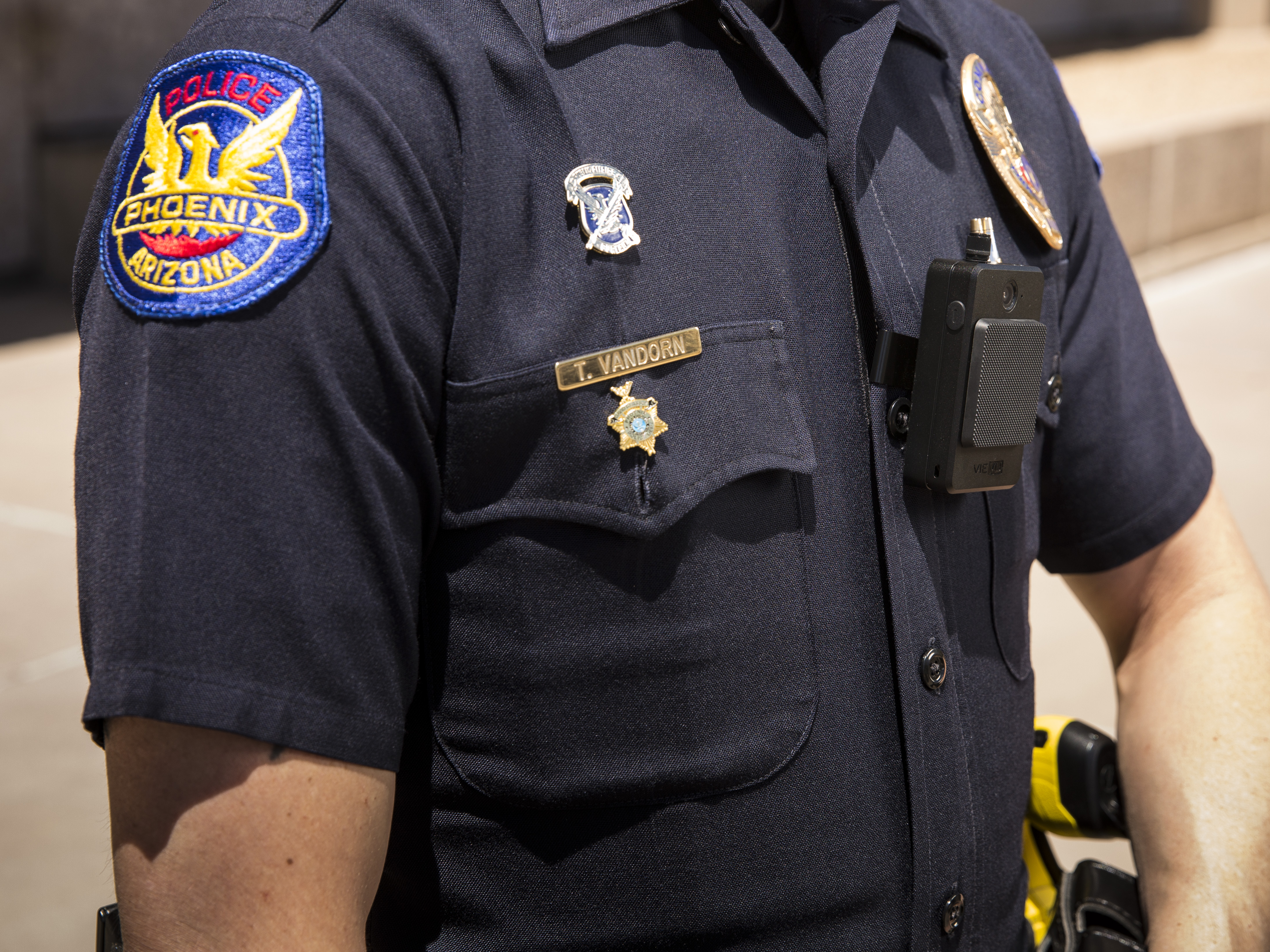Phoenix, Arizona

Project Overview
The Phoenix Police Department used their 2015 SPI award to deploy additional body worn cameras (BWCs) among random patrol officers citywide. The continual data collection and research examined whether this form of BWC deployment is a more effective and efficient method of deploying BWCs. The goal was to decrease citizen complaints, evaluate the process and outcome of internal investigations for positive resolutions, and improve police/community relationships through transparency, accountability, and legitimacy, which will enhance public and officer safety.
Methods and Findings
Research Design
The research team randomly selected officers to wear a BWC from the pool of 467 officers who provided consent. The evaluation relied on BWC metadata automatically generated by camera activation, official police computer-aided dispatch (CAD) data, official arrest data, official use of force reports, and citizen complaints reported to the PPD.
Findings
- Officers wearing BWCs activated their camera in 45% of incidents at the beginning of the study, however, after PPD adopted a more restrictive activation policy, activations increased to roughly 75% of incidents.
- While BWCs had little to no impact on officer perceptions, handing of dispatched calls for service, response time, likelihood of arrest, and use of force, they were related to a decline in the rate of complaints for officers who were mandated to wear a BWC and an increase in the rate of complaints for officers who voluntarily wore BWCs.
- Officers mandated to wear BWCs were less likely to agree that BWCs improve officer efficacy after being assigned a BWC.

